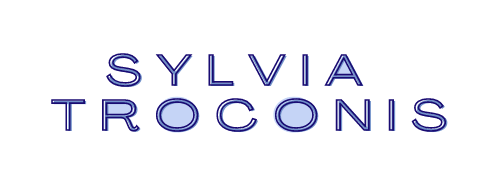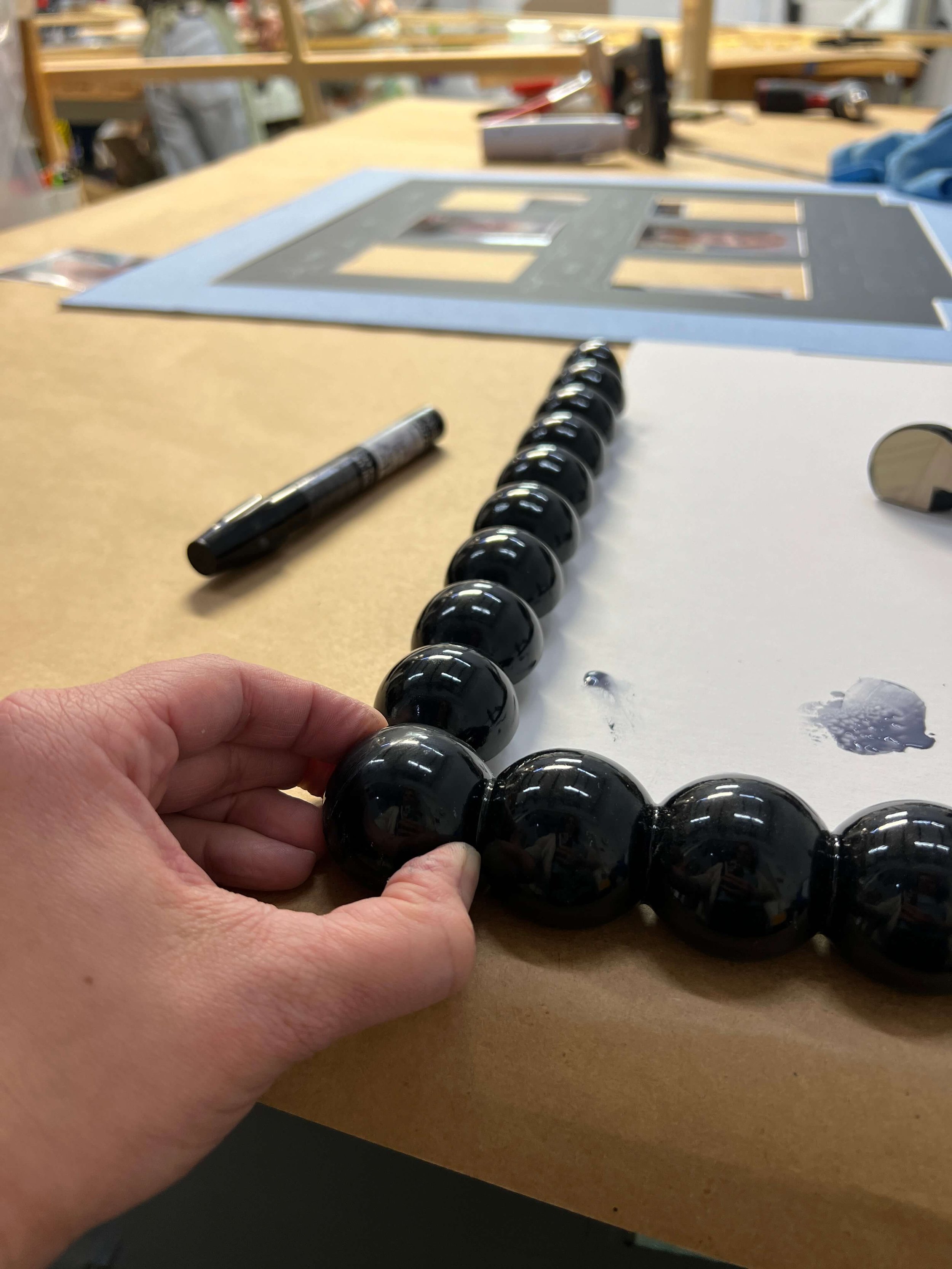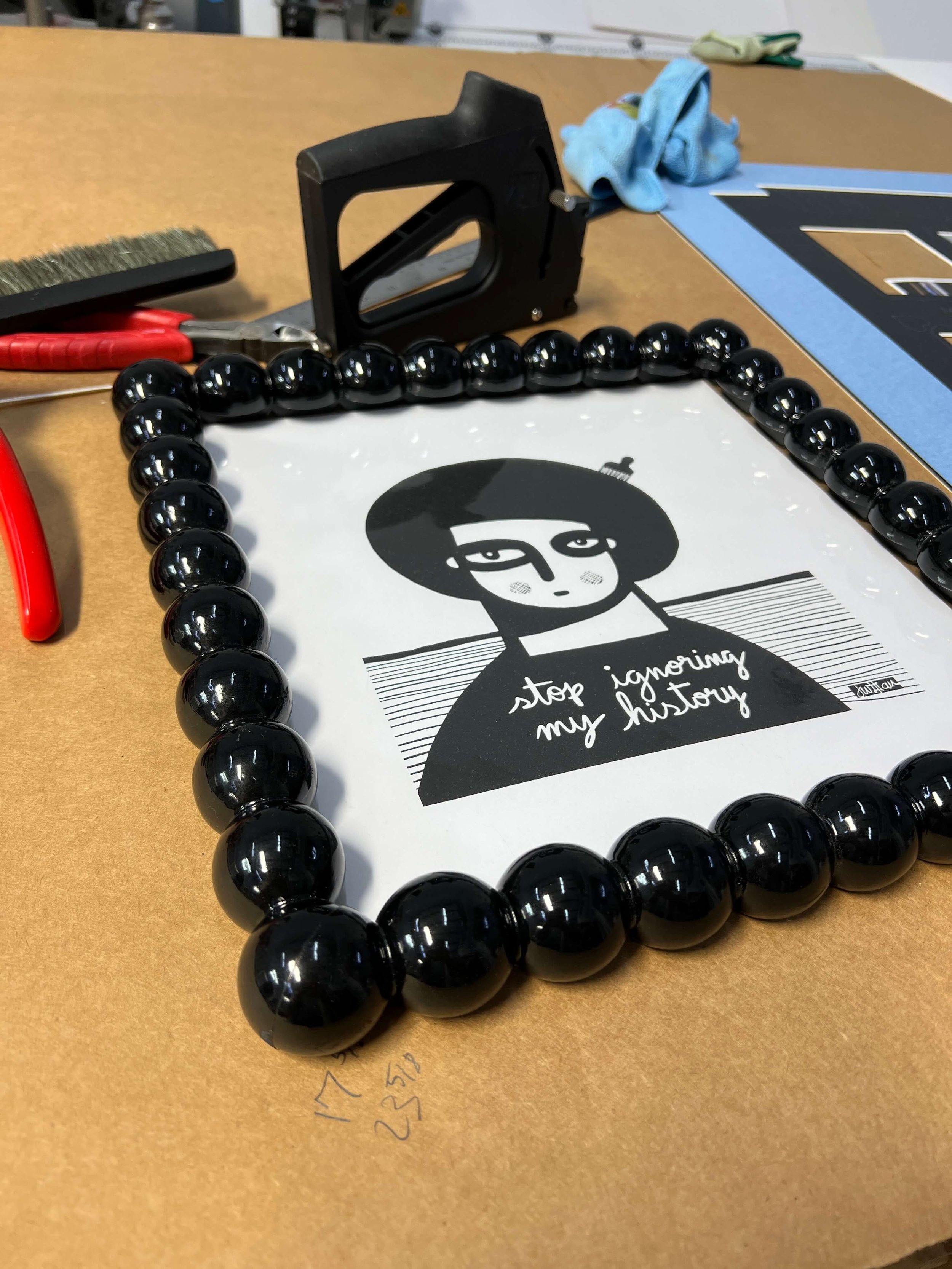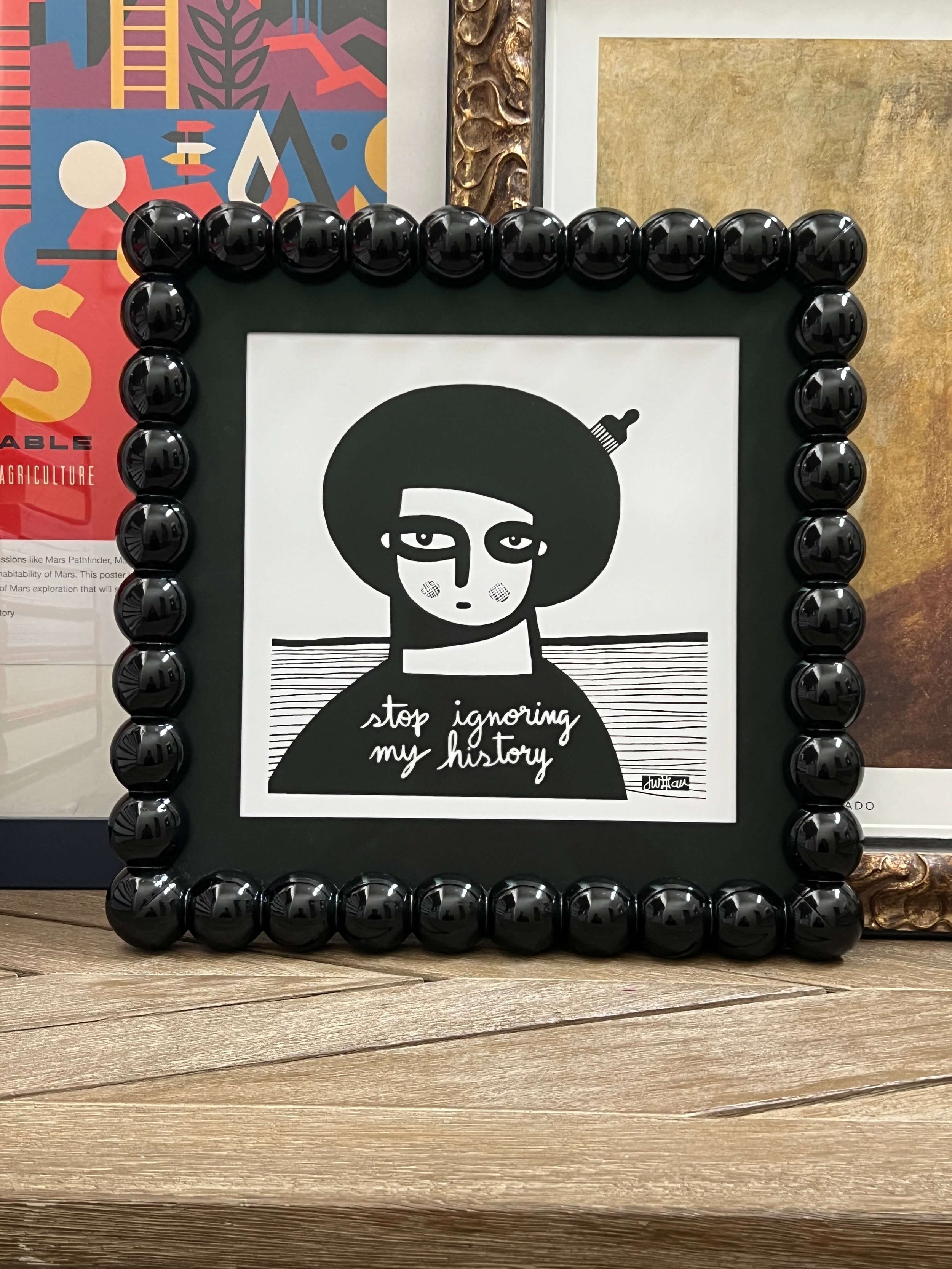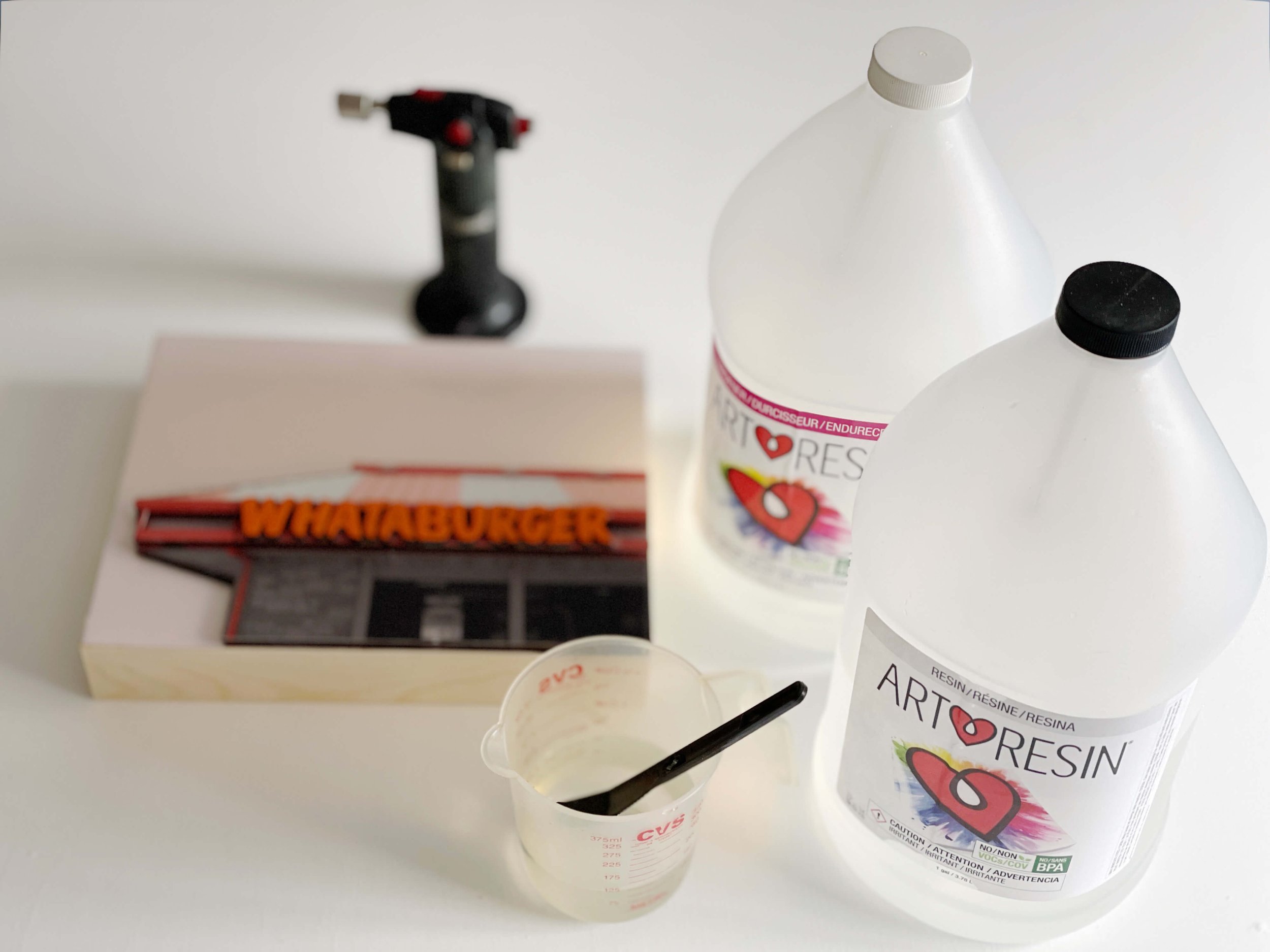Mastering the Craft: An In-Depth Look into the Art of Framing
Having devoted 2.5 years to the field of picture framing and obtaining certification last year, the realization dawned upon me that framing is a distinct craft with a depth of knowledge often underestimated. Preservation techniques, contingent upon the value, whether monetary or sentimental, underscore the intricacies involved. In this blog post, I will meticulously outline the process of framing a print by the esteemed artist and friend, Nick Ramos.
Having devoted 2.5 years to the field of picture framing and obtaining certification last year from the PPFA (Professional Picture Framers Association), the realization dawned upon me that framing is a distinct craft with a depth of knowledge often underestimated. Preservation techniques, contingent upon the value, whether monetary or sentimental, underscore the intricacies involved. In this blog post, I will meticulously outline the process of framing a print by the esteemed artist and friend, Nick Ramos.
Selecting an Unconventional Moulding:
Initiating the framing process involves the critical task of selecting a moulding that aligns with and enhances the artwork. Opting for an unconventional moulding sourced from Gryphon Moulding, I sought to mirror the distinctive features of the character depicted in Nick's print. The design elements, including balls reminiscent of the character's afro, contribute to a cohesive visual presentation that encapsulates the essence of the artwork.
Ball Moulding from Gryphon Moulding.
Navigating the Challenges of Unconventional Moulding:
The utilization of unconventional moulding introduces distinctive challenges. In contrast to standard cut-and-glue framing techniques, precision takes precedence. The process necessitates cutting larger pieces and meticulously sanding them down to achieve the desired middle of the ball, ensuring a flawless and visually appealing corner finish.
Working with this particular moulding accentuates the importance of accuracy in dimension. Tailored to specific art dimensions, each step demands meticulous measurement and calculation to guarantee the frame perfectly encapsulates the artwork. Deviating from these dimensions poses the risk of compromising the final outcome, emphasizing the significance of precision.
Sanding the ends until is right in the middle.
V Nailing Technique:
After gluing the moulding together and to fortify the corners and uphold structural integrity, the frame is secured using the V nailing technique. This involves strategically shooting V-shaped staples from the back, establishing a secure bond that ensures the frame components remain tightly integrated. This additional safety measure contributes to enhanced strength and durability throughout the framing process.
Check the V nail in the moulding.
Preserving Artwork with Acid-Free Foam Core:
Prior to framing the print, a methodical approach is employed, involving the hinge of the artwork to an acid-free foam core board using P90 tape. Beyond aesthetic considerations, the acid-free nature of the foam core mitigates yellowing over time, that can then be transferred to the print.
This P90 tape goes around the foam core and then is attached to that foam core with another piece of tape creating a T hinge.
Creating a Precision Mat:
The subsequent step involves crafting a precision mat using the Valiani mat cutter. While the mat may serve decorative purposes, its primary function is to establish a gap between the artwork and the glass. This separation prevents the transfer of the print onto the glass over time, damaging the art in the long run.
Designing the mat.
Choosing Artglass AR70 for UV Protection:
The final touch involves the selection of suitable glass. Artglass AR70, is an anti-reflection glass with 70% UV protection. I chose this middle grade protection glass to safeguard the print. This strategic choice guards against the detrimental effects of UV light, preventing fading of the print over time and aligning with the commitment to preserving the integrity of the artwork.
Completing the Framing Process:
With all components meticulously arranged—the print, foam core, mat, and Artglass AR70—the art package is carefully fitted into the frame. The back is sealed, and finishing touches, such as hangers, wire, pom poms, and stickers, are added.
Framing emerges as an art form in itself, demanding precision, attention to detail, and a profound understanding of the artwork's essence.
Crafting Connections: Lisa Zinna and Sylvia Troconis' Artistic Fusion Unveiled
In this behind-the-scenes peek, let me take you on the journey of artistic collaboration that Lisa Zinna and I, Sylvia Troconis, have been on. Situated in the vibrant art scene of Austin, Texas, our partnership has been an exploration that's broken the mold, letting our creative talents merge in a way that feels both genuine and grounded.
In this behind-the-scenes peek, let me take you on the journey of artistic collaboration that Lisa Zinna and I, Sylvia Troconis, have been on. Situated in the vibrant art scene of Austin, Texas, our partnership has been an exploration that's broken the mold, letting our creative talents merge in a way that feels both genuine and grounded.
The story starts with Lisa's talent for capturing moments with her camera. Her photos become the cornerstone of our project. When she finds a photo with an angle and composition that are just right, she edits the image to cut out the background and replaces it with a color to our liking and one that compliments the photo nicely.
As things unfold, my role kicks in as I trace in Adobe Illustrator and extract key parts from each photo, a process that captures the interesting parts of these images.
Using these digital blueprints, we turn to the Glowforge, which cuts these draftwood pieces. This step bridges the gap between digital and physical, bringing our vision to life.
With the draftwood cutouts ready, I step in, placing each photo cutout into its draftwood counterpart. This step blends the visual impact of the photographs with a tactile dimension, adding depth and texture to our combined effort.
I then bring in the "WHATABURGER" lettering, which I paint using an orange Posca marker. It is a personal touch that adds character to our collaborative piece.
Lisa's expertise comes into play as she delicately pours resin over our creation. This final touch adds a shine that ties everything together, giving our work a unified look and feel.
Imagine our excitement when our piece found a home in The Whataburger Museum of Art—a digital space that draws inspiration from the beloved Texas burger chain. These creations, born from our creative dance, stand as a living reminder of the wonder that unfolds when artistic paths intertwine.
Unraveling Art's Boundaries: Celebrating Fiber Arts in My Sculptural Mixed Media Journey
In this post, I'm excited to share a glimpse into my artistic journey, exploring how the world of Fiber Arts has touched my own work in mixed media. As a visual artist from Caracas, Venezuela, now based in Austin, Texas, I look for (and find) inspiration almost everywhere.
I recently had the pleasure of diving into Katy Hessel's book, "The Story of Art Without Men," and it was a revelation that sparked a newfound appreciation for a particular feminist perspective in the art world.
In this post, I'm excited to share a glimpse into my artistic journey, exploring how the world of Fiber Arts has touched my own work in mixed media. As a visual artist from Caracas, Venezuela, now based in Austin, Texas, I look for (and find) inspiration almost everywhere.
I recently had the pleasure of diving into Katy Hessel's book, "The Story of Art Without Men," and it was a revelation that sparked a newfound appreciation for a particular feminist perspective in the art world.
The book took me on a captivating journey through the history of feminist art, and one particular aspect that resonated deeply with me was how feminist artists utilized the needle as a powerful tool of protest in the 1960s.
“The Story of Art Without Men,” by Katy Hessel.
Up until that era, Fiber Arts were often dismissed as a lesser, ‘decorative’ form of art, simply because, throughout history, it had been associated with domesticity and women. But these trailblazing artists in the 1960s courageously challenged the norms, pushing back against the notion that their art wasn't serious, genuine or even worthy of being considered ‘fine art.’
It was a turning point in art history when the MoMA held the first group exhibition dedicated to contemporary artistic weavers in 1969. This showcased the incredible talent and creativity in the Fiber Arts world, and I found myself drawn to the woven forms of artists like Lenore Tawny, a student of the New Bauhaus.
Using a needle in my own sculptural work.
The resilience of these artists in defying the devaluation of Fiber Arts resonates deeply with me, as it parallels the challenges I sometimes face in the world of mixed media sculpture.
My work delves into the realm of mixed media sculptural art, where I fuse various materials like wood, fiber and paint to create unique and expressive pieces.
I draw inspiration from the world around me, incorporating digital tools in my design process and employing precision tools and machinery to bring my visions to life.
In every piece I create, there's a dialogue between the materials, colors, and techniques, resulting in intricate and vibrant artworks.
A peek at the early stage of a work.
The feminist perspective I embrace celebrates the strength, creativity, and resilience of women artists throughout history. As I experiment with fiber elements in my sculptures, I pay homage to the rich tradition of Fiber Arts and the pioneering women who paved the way. Through my art, I aim to challenge stereotypes and break free from limiting definitions of what art can be.
At its core, my work invites viewers to explore and engage with each piece. It's an invitation to discover the wonder of my sculptures and the stories they tell. As you encounter my art, I hope you, too, experience a sense of discovery akin to that childlike wonder we all once had.
In my work, the materials I use often inspire new ways of creating.
Every fiber in my sculptures represents a thread of thought and a moment of inspiration. Just like the fearless artists before me, I weave my message into every piece, embracing the fiber of art and its limitless possibilities. I believe that art is a powerful tool for change.
So, as I continue on my artistic journey, I invite you to join me in keeping an open mind to how materials come together in a work of art, and how we think about works of art in the world. Let's defy expectations, challenge stereotypes, and embrace the power of art to shape our world.
